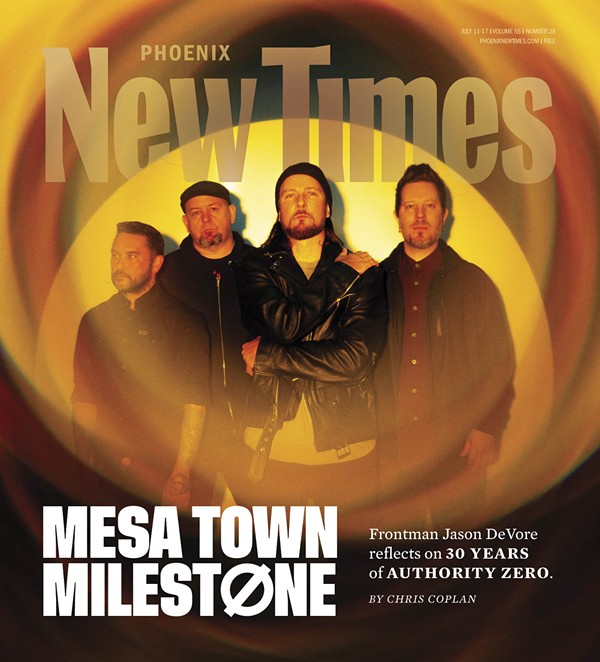A report published this past week has found that public schools in Arizona with high Latino populations have less funding and face greater challenges compared to schools that have lower proportions of Latino students.
Released October 6, State of Latino Arizona 2016 finds that schools with large percentages of Latino students generally serve students with the highest poverty rates and lowest achievement levels. These schools are the most in need, yet they receive less funding. And a shift in how schools are funded may be to blame, according to the report, which was sponsored by Arizona State University and the Arizona Community Foundation.
Over the past 10 years, a decline in state funding for public schools has increased reliance on local resources, such as bonds and overrides — in which voters agree to temporarily raise their taxes to give more money to schools.
School districts with large percentages of Latino students have a hard time generating funding through bonds and overrides. That's partly because many of their students come from low-income families – nearly nine out of 10 students in schools with high Latino enrollment are eligible for a free or reduced lunch – and, therefore, the schools have less property-value wealth to draw upon than schools with lower proportions of Latino students.
As a result, schools with the highest Latino enrollment receive $3,060 per pupil from local sources, while schools with lower Latino enrollment receive closer to $4,000 per pupil from local sources.
When combining funding from both state and local sources, schools with the highest Latino enrollment received $7,565 per pupil, compared with $7,955 for schools with low Latino enrollment.
David Garcia, an ASU professor and co-author of the report, discussed the report findings last week during an event at the Heard Museum in Phoenix. He said one of the biggest takeaways from the report is that Arizona's increasing reliance on local funding is leaving Latino students, who make up 44 percent of all public-school students in Arizona, at an educational disadvantage.
"In the end, what this report paints is a tremendous inequitable condition," Garcia said. "We're asking our local school districts, particularly a number of high-Latino elementary school districts — a lot of them on the west side of Phoenix — to pass bonds and overrides with property values that are a fraction of the property values in some of their counterpart districts."
Garcia added that a decline in state funding for schools also has led to an increase in the use of public-school tax credits to pay for students' extracurricular activities. In 2005, about $35.5 million in tax-credit contributions were made to public schools in Arizona — a figure that had increased to $51 million by 2013, according to the report.
The problem with public-school tax credit is that because many Latino families live in poverty, they don't have the money to make tax-credit contributions, Garcia said.
Marci Higuera Koke, former principal of Ignacio Conchos Elementary School, touched on this in the report. She said Ignacio Conchos Elementary School faces "many challenges" when asking for school tax credits, because the vast majority of the students there are Latino and come from low-income families.
"Our families are living with little to no discretionary income, and from paycheck to paycheck," the report quotes her as saying. "Asking parents to donate $400 to help fund field trips or extracurricular activities is asking them to default on their rent or electricity bill, or forgo weekly groceries."
Garcia spoke about the importance of extracurricular activities during the event last week, saying they "are what make education meaningful" and help students understand how what is happening in the classroom relates to the real world.
"Unfortunately, we have set up a system in Arizona where those who have the most to benefit from those opportunities are least likely to get them, because of the resources that are available," he said.
Phoenix Mayor Greg Stanton, who also attended last week's event, said the report shows "very clearly that our state legislators' decisions throughout the years to keep Arizona last or near last in per-pupil education funding has disproportionately impacted our growing Latino population."
"But this isn't the first time we've gotten this message," he added.
Stanton noted that in 2001, a report by ASU's Morrison Institute for Public Policy urged Arizona leaders to close the academic-achievement gap between Latino and white students. Ten years later, the institute released another report that found Arizona is "failing" to address the issue and noted the state "cannot afford – literally and figuratively – to continue to do so."
"This is a leadership test that we cannot afford to fail again," Stanton said. "This new report by Dr. Garcia should spark more than a conversation. It needs to spark action."
[
{
"name": "Air - MediumRectangle - Inline Content - Mobile Display Size",
"component": "18478561",
"insertPoint": "2",
"requiredCountToDisplay": "2",
"watchElement": ".fdn-content-body",
"astAdList": [
{
"adType": "rectangle",
"displayTargets": "mobile"
}
]
},{
"name": "Editor Picks",
"component": "16759093",
"insertPoint": "4",
"requiredCountToDisplay": "1",
"watchElement": ".fdn-content-body",
"astAdList": [
{
"adType": "rectangle",
"displayTargets": "desktop|tablet"
},{
"adType": "rectangle",
"displayTargets": "desktop|tablet|mobile"
}
]
},{
"name": "Inline Links",
"component": "17980324",
"insertPoint": "8th",
"startingPoint": 8,
"requiredCountToDisplay": "7",
"maxInsertions": 25
},{
"name": "Air - MediumRectangle - Combo - Inline Content",
"component": "16759092",
"insertPoint": "8th",
"startingPoint": 8,
"requiredCountToDisplay": "7",
"maxInsertions": 25,
"watchElement": ".fdn-content-body",
"astAdList": [
{
"adType": "rectangle",
"displayTargets": "desktop|tablet"
},{
"adType": "rectangle",
"displayTargets": "desktop|tablet|mobile"
}
]
},{
"name": "Inline Links",
"component": "17980324",
"insertPoint": "8th",
"startingPoint": 12,
"requiredCountToDisplay": "11",
"maxInsertions": 24
},{
"name": "Air - Leaderboard Tower - Combo - Inline Content",
"component": "16759094",
"insertPoint": "8th",
"startingPoint": 12,
"requiredCountToDisplay": "11",
"maxInsertions": 24,
"watchElement": ".fdn-content-body",
"astAdList": [
{
"adType": "leaderboardInlineContent",
"displayTargets": "desktop|tablet"
},{
"adType": "tower",
"displayTargets": "mobile"
}
]
}
]








